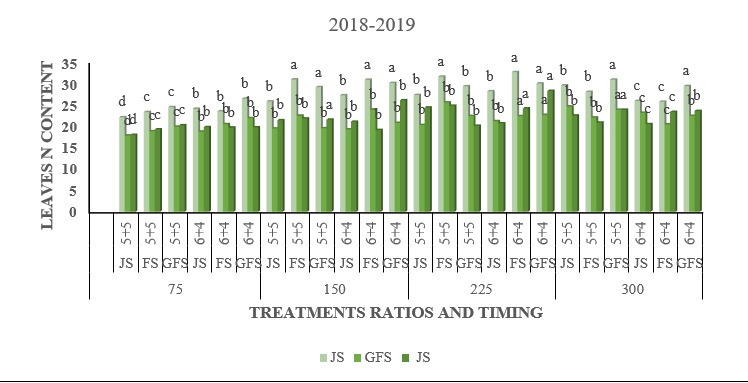IMPACT OF NITROGEN FERTILIZER MANAGEMENT ON DISTRIBUTION OF NITROGEN CONTENT IN DIFFERENT ORGANS OF WINTER WHEAT
DOI:
https://doi.org/10.71146/kjmr213Abstract
However, increasing the rates and adjusting the time of nitrogen treatment might worsen nitrogen loss and lower grain yields, which will have a detrimental effect on the quality of the environment. The relationship between nitrogen nutrition and grain production has been extensively studied, but much has been discovered about how nitrogen concentration in winter wheat, higher up in components like leaves, stems, and grains, reacts to nitrogen nutrition. At Shanxi Agricultural University's Taigu Experimental Agricultural Centre in Shanxi Province, China, experiments in the field were carried out. Three repetitions of these split-plot tests were conducted. In the main plots, four nitrogen application levels—75, 150, 225, and 300 kg ha-1 were tested. Different nitrogen levels were used in the subplots, including 5:5 (50%, 50%) and 6:4 (60%, 40%). Nitrogen fertilizer was applied at pre-sowing, jointing, flowering, and grain filling stages, respectively. The 12 m² (3 m × 4 m) experimental plots were used. As nitrogen fertilizer rates increased, there was a considerable increase in the total nitrogen content of the dry matter. In comparison to other growing phases and nitrogen rates, plants got nitrogen nutrition at 60% during sowing and 40% during the jointing stage, increasing the average total nitrogen content from 40.00 to 60.00% under 225 kg N ha-1. Less than 225 kg N ha-1 at the jointing stage, when nitrogen was given in 6:4 ratios, the maximum nitrogen content in leaves was recorded at 32–34 g kg-1. Similarly, at 225 kg N ha-1, the maximum nitrogen contents in the stem were measured at 13–15 g kg-1, meaning that plants absorbed 60% of their nitrogen nutrition during sowing and 40% during the jointing stage. 225 kg ha-1 of nitrogen, applied in the following proportions: 60%, 40%, 0%, and 0% (amount applied at the sowing, jointing, blooming, and grain filling stages) successfully increased the nitrogen content of winter wheat's leaves, stems, and grains above ground.
Downloads

Downloads
Published
Issue
Section
License
Copyright (c) 2025 Muhammad Saleem Kubar, Asif Ali Kaleri, Danish Manzoor, Urooj Rehmani, Shafiq Ur Rehman, Wahid Baksh, Hafsa Munir, Rabia Laghari, Vik Ram Meghwar, Muhammad Luqman Khan Bazai, Yang Wude (Author)

This work is licensed under a Creative Commons Attribution 4.0 International License.






